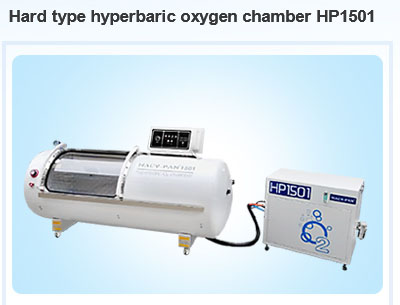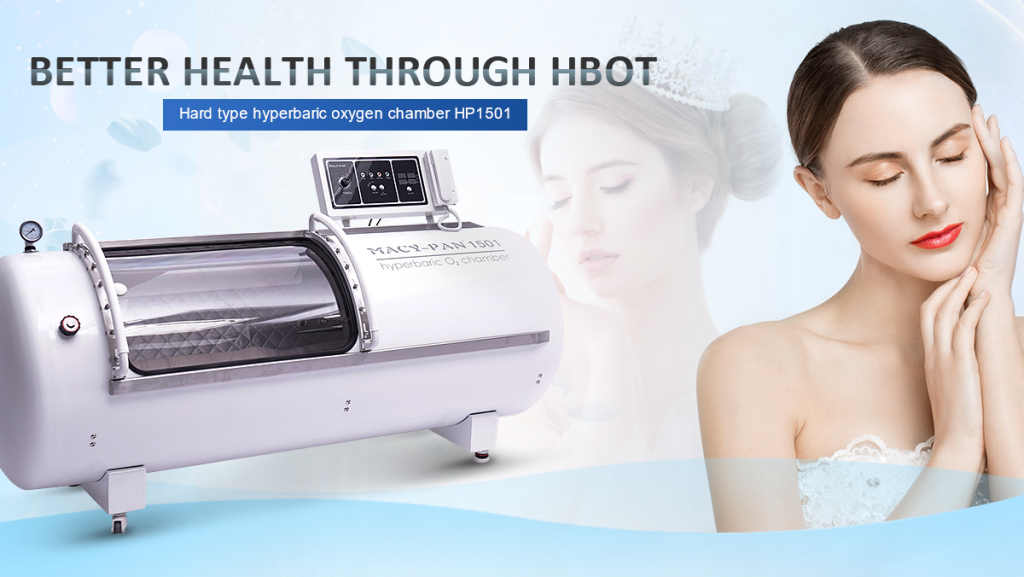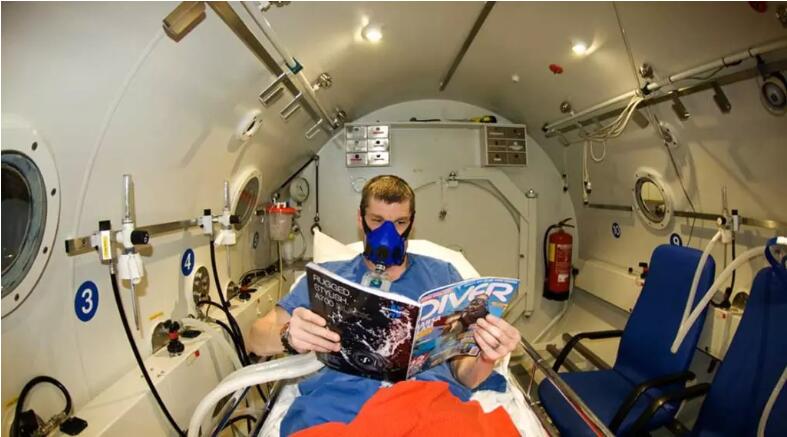Oxygen Chamber for Recovery and Treatment
Everything you need to Know about Oxygen Chamber
You take off your shoes, go to the camera, and press the “Start” button on the control unit. High-purity air with high oxygen content is supplied to the chamber. As the pressure increases and decreases, you need to “blow” your ears (such as when you take off and land on an airplane). After reaching the required pressure (2-5 minutes), the symptoms of “stuffy nose” will disappear. After 20-50 minutes of relaxation (depending on the selected time), the camera will automatically turn off and the pressure will be equal to atmospheric pressure within 5 minutes. The session ends.
This is what the oxygen enrichment process looks like in the oxygen chamber.

What will happen after the end
For athletes, this is:
-Increased endurance
-Quick recovery
-which performed
-Speed up adaptation
-Muscle growth
-Effective rehabilitation
-Improve training effect
-Negative doping test
-Weight control
For office workers:
-Work hard, overwork, and recover quickly after stress
-Improve brain function
-Improve efficiency
-Get rid of drowsiness, chronic fatigue syndrome and headache
For patients in medical clinics and beauty salons:
-Speed up the process of fat breakdown
-Skin cell renewal
-Improve the condition of hair and nails
-good mood 🙂
What is an oxygen chamber?
The oxygen chamber is a new-generation pressure chamber made of special materials. With the help of highly pure air or its mixture with oxygen, it can generate a pressure of 1.1-1.5 ATA above atmospheric pressure. N Transposition The pressurized oxygen chamber increases the biological energy of Obrations in each cell of the organism.
The oxygen chamber is used to recover athletes and perform physical therapy. Oxygen or pressure chambers are used by the world’s leading athletes: football players, wrestlers, weightlifters, participants of the Kazan Universiade. Such equipment is installed in leading sports clubs and clinics in Moscow and even around the world.
The HP1501 oxygen chamber is located in aluminum housing. It is installed in any office, fireproof and does not require consumables (masks and breathing circuits). Five available overpressure modes expand the treatment capacity of the pressure chamber. The pressure chamber operates in an automatic mode where the program starts and ends.
- Comfort-The most convenient way to enter the pressure room is to easily place the surgical procedure on the orthopedic mattress and pillow, and the large observation window eliminates the fear of enclosed spaces.
- Safety-After the procedure, the patient can leave the cell independently without medical staff. The patient will not remain locked in the pressure chamber.
- Professionalism-The presence of air conditioning allows you to operate in patient mode without causing technical interruptions and downtime.
- Simple-Installation compatible with other devices in any office is controlled by a nurse. No need to train employees.
- Trust-Delivery to public and private health institutions. After installing a pressure chamber, many customers subsequently purchased 2, 3, or even 5 pressure chambers in their facilities.
How the pressure chamber works
The working principle of the pressure chamber is to produce a certain proportion of air-gas mixture in a narrow space.
First, place the patient in the pressure chamber. If there is an oxygen atmosphere inside, all safety measures must be taken-the use of synthetic materials, cosmetics, electronic equipment and other items is prohibited. The oxygen atmosphere is very dangerous and may cause fire or explosion.
The air-gas mixture is then fed into the pressure chamber under pressure. The pressure rises steadily, so there is time to “purge”-the ears can be put away, which may cause barotrauma.
Set the pressure in the pressure chamber according to the process-from 1.1 ATA to 2-3 ATA. It is about 30 meters underwater.
In fact, a clean enclosed space is obtained-on the one hand an air-gas mixture is provided, and on the other hand mining work is also carried out. During operation, the valve made a strong hiss.
Medical Pressure Chamber

A medical pressure chamber is a medical device that looks like dark blue. The client is placed in a pressure chamber lying or sitting, he only needs to be there and inhale oxygen-enriched air. The pressure and oxygen concentration in the room are controlled by sensors and special valves. These indicators are monitored by doctors or other experts. The conditions created by the pressure chamber are similar to diving about five to ten meters below sea level. During this process, earplugs may appear. The hyperbaric oxygenation process is a process-from 10 to 40 processes. The duration of a session is from twenty minutes to one hour.
Even 50 to 60 years ago, many people saw and used the classic medical pressure chamber-a large metal cylinder, similar to dark blue. They are single and multiple.
A single pressure chamber with a small diameter, where people are placed horizontally, almost motionless. During the meeting, you can sleep or watch TV-usually hung on the wall or ceiling to see.
Multiple pressure chambers are designed for groups of 4 to 20 people. There are few such pressure chambers. They are mainly located in large clinics and hospitals, research centers and astronaut training centers. You can also meet divers and divers.

How is the pressure room training?
The whole process is very simple and comfortable; you can carry books, phones and tablets with you in a modern pressure room. Or just sleep.
- Prepare
Take off your shoes and bring a lollipop, a telephone or a book with you and placed in the pressure chamber. - Compression
Within 5 minutes, the pressure will rise to the working state -1.3 ATA. It will be a bit of an ear, but it is easy to make up with candy - Conference
40 minutes to fall asleep or start a business - Decompression
Within 5 minutes, the pressure will drop to normal level, you can open the pressure chamber-the session has ended
Is Pressure chamber-beneficial or harmful?
During hyperbaric oxygenation, the oxygen saturation in the blood is much higher than during normal breathing. Oxygen and blood penetrate into all parts of the human body, especially those parts in urgent need of such intake. In this process, the human body begins the regeneration process in all tissues such as nerves, muscles, bones, cartilage and so on. Oxygen stimulates the normalization of fat tissue volume. High-pressure oxygenation helps burn excess fat.
How to treat the pressure chamber?
Vascular pathology: Eliminate vascular diseases of the extremities, trophic ulcers caused by disorders of the circulatory system, vascular gas embolism, etc.
Cardiac pathology: coronary heart disease (IHD), angina pectoris, arrhythmia, systole, heart failure, post-infarct condition decompensation, cardiac glycoside poisoning, pulmonary heart failure and other arrhythmic variations.
Gastrointestinal pathology: peptic ulcer of stomach and duodenum, hemorrhagic syndrome after gastric bleeding, enteropathy.
Liver pathology: acute hepatitis, chronic hepatitis, cirrhosis, liver failure.
Nervous system pathology: ischemic stroke, brain trauma, encephalopathy, spinal cord injury, peripheral nerve paralysis.
Poisoning: Carbon monoxide poisoning, botulinum poisoning, methionin-forming substance, cyanide.
Eye pathology: abnormal retinal circulation during methanol poisoning, diabetic retinopathy, optic nerve degeneration.
Endocrine system pathology: decompensated insulin-dependent diabetes, diabetic complications, diffuse toxic goiter.
Maxillofacial pathology: periodontal disease, necrotizing gingivitis and stomatitis, healing after plastic surgery.
Gynecology: Chronic inflammatory diseases of female pelvic organs.
Yang: Male sexual function improved significantly after HBO treatment prostatitis.
Obstetric Pathology: Fetal hypoxia, threat of miscarriage, fetal malnutrition, immune conflict pregnancy, pregnancy with pathology, female endocrine system pathology, infertility of various causes.
Neonatal pathology: suffocation during delivery, cerebrovascular accident, neonatal hemolytic disease, ulcerative necrotizing enterocolitis.
Wound pathology: prevent wound infection, slow granulation wounds, burn wound surface, frostbite, plastic surgery and other wounds.
The caisson disease, air and gas embolism, decompression sickness, lung pressure injury.
Radiation injury: Radiation osteonecrosis, myelitis, enteritis; a special group includes patients receiving chemotherapy and radiation therapy for cancer.
Pressure chambers can be used to improve healthy people with certain risk factors at home or at work. Such procedures are suitable for patients with risk factors for coronary heart disease, which are manifested as high cholesterol, overweight and low resistance to physical exercise. The pressure chamber will benefit people with high activity pressure. It can be used for neuropsychiatric diseases and greater physical exertion.
Hyperbaric oxygen is suitable for patients exposed to electromagnetic fields, computers, and mobile and other communication systems. This will help to significantly improve the nerve and physical endurance of athletes as well as pilots, sailors and high-altitude workers (high altitude installers, climbers, etc.).
Contraindications for pressure chambers
The main contraindications to using a pressure chamber are:
The presence of acute respiratory diseases
Seizures
Personal intolerance
Fear of confined spaces
Otolaryngology organ pathology (infringement of Eustachian tube patency)
During pregnancy, accompanied by increased blood pressure
Hyperosmotic diseases.
People with severe bronchial asthma accompanied by pulmonary heart disease are prohibited from using the pressure chamber. A similar procedure is contraindicated for acute suppurative diseases in the otolaryngology department, and is accompanied by a barometric disorder.
Contraindications for hyperbaric oxygen therapy include compensatory heart failure, coronary heart disease, and treatment-resistant hypertension. If the patient has an abscess, cyst, or cave with a pneumothorax (without drainage), hyperbaric oxygenation is not possible.
During pregnancy, the pressure chamber is not suitable for heart defects with severe liver and kidney failure. Contraindications to this process include the presence of fibroids (prone to bleeding) in the patient, and gastric ulcers when the condition worsens. Hyperbaric oxygen is contraindicated for the exacerbation of any chronic infection, including the exacerbation of chronic bronchitis.
However, for cases of impaired eustachian tube and sinus patency, due to various localized hernias (except HH), this surgery is still not possible. Pressure chambers are not suitable for people suffering from traumatic brain injury and the effects of by-products. Contraindications include tuberculosis and tumor disease. In addition, this procedure is not performed for people over 60 years old and people with claustrophobia.
The pressure chamber is an amazing device that can fill the body with a lot of oxygen. This will help cope with many diseases and prevent their development. However, you must always consult a doctor before performing such procedures.
Pressure chamber: History of appearance.
Many people may be surprised by the idea of treating patients in a limited space for more than 300 years. In 1660, R. Boyle created the first “chamber” to study the effect of “compressed” air on the human body, that is, the air pressure is higher than atmospheric pressure.
In 1664, The scientist first used compressed air as a therapeutic factor. The positive impact, although not significant, has proved that airtight chambers have been established in Sweden, Germany, the United Kingdom, and Belgium to supply air under pressure.
In the 19th century, there were nine such pneumatic hospitals in china. The founder of HBOT is considered to be the well-known Dutch surgeon Borema His animal experiments in 1956 showed that even if blood substitutes were used to replace all blood, their life might exist under 100% oxygen above atmospheric pressure.
the first artificial oxygenation laboratory was established in 1963, and now it has become a high-pressure medicine and technology center (research institute). As a result, a modern barometric therapy has emerged, which was previously restricted and made possible in our time due to the development of advanced technology (the creation of modern pressure chambers).








